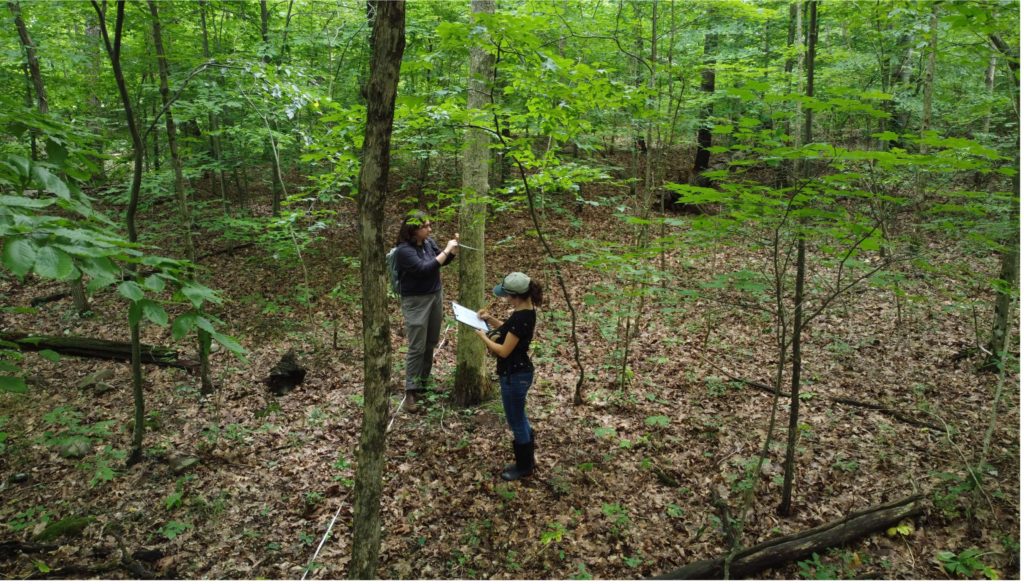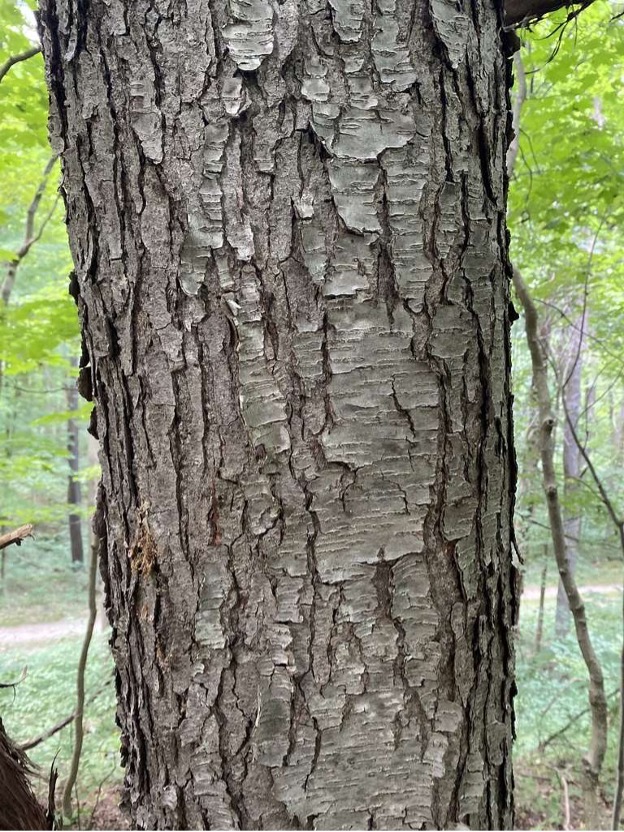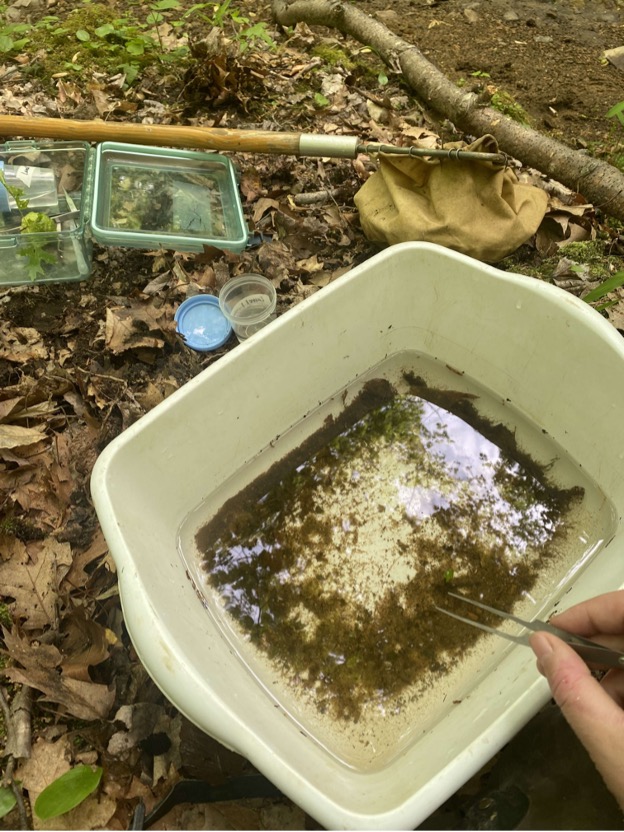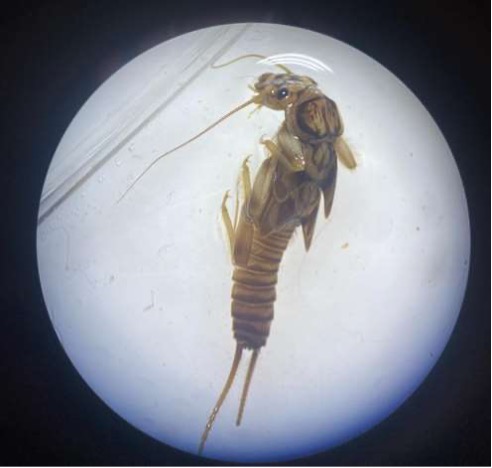by Rachel Lloyd
This summer I was an intern at Powdermill Nature Reserve, Carnegie Museum of Natural History’s environmental field research station. During my time at Powdermill, I participated in a variety of projects: sampling streams for macroinvertebrates, surveying trees, installing and checking insect pitfall traps, monitoring wildlife cameras, and more.

Most of the projects were designed to gain greater understanding of the forest ecosystem at Powdermill, specifically the area of the reserve that is home to abandoned surface coal mines. Mines that were active before the passage of the Surface Mining Control and Reclamation Act in 1977 were often completely unregulated and extremely harmful to the environment because of associated habitat destruction, and air, noise, and water pollution. The long-lasting damage to ecosystems by abandoned surface coal mines includes polluted waterways and unstable land surface gradients in the form of cliff-like highwalls created to expose coal seams.
A remediation project has been proposed at Powdermill to help restore the impacted land to what it was like before mining. Filling in the high walls to restore original surface contours, and remediating acid mine drainage in streams are two major components of any surface mine remediation project.
Before any restoration work begins, it is important to have a baseline understanding of the ecosystem, so that there are parameters to measure change against after the completion of the project. Tree surveying, macroinvertebrate sampling, and wildlife camera monitoring all contributed to the establishment of baseline data.

Forestry surveying served to document both the density and diversity of the plant species living in the study area, from overstory trees to understory shrubs. The most dominant species of overstory trees in the surveyed tract were sugar maples (Acer saccharum). In 2008, during a previous vegetation survey of the same tract, black cherry (Prunus serotina) was found to be the most abundant species. This notable change over time was expected. Black cherry trees are a pioneer species and are among the first trees to grow in a barren environment. Black cherry trees are also relatively quick to die off, and thereby create room and resources for other species. The change in the most abundant species from black cherries to sugar maples shows that the forest of the study area is changing and aging from an early to late successional forest.

Sampling aquatic macroinvertebrates living in streams can be a great indication of the health and quality of the stream, and that of the watershed drained by the stream. In establishing baseline measurements, stream samples were taken at various locations at Powdermill near the mining sites. After collection, the samples were sorted and identified, and a water quality score was assigned to each location. Stonefly nymphs (Plecoptera) were the most dominant organisms across the whole survey. Other organisms collected included caddisfly larvae (Trichoptera), cranefly larvae (Tipulidae), fishfly larvae (Corydalidae: Chauliodinae), blackfly larvae (Simuliidae), crayfish (Decapoda), and midge larvae (Chironomidae). One important observation was the absence of mayfly nymphs (Ephemeroptera) from most of the samples. Mayflies, along with stoneflies and caddisflies, are typically found in healthy streams in Pennsylvania. The absence of any of them strongly suggests harmful anthropogenic impact, in this case acid mine run-off.

Camera traps were also put in place to monitor the larger wildlife activity in the area. Black bears, white-tailed deer, coyotes, and bobcats are some of the larger mammals known to use the land at Powdermill. The cameras will be kept up until the restoration project begins. After restoration, the wildlife images these cameras collect will monitor how the animals respond to the changed landscape.
Together, the forestry surveys, stream sampling, and wildlife cameras all contribute to a comprehensive understanding of how these areas of the reserve are currently functioning as an ecosystem. The standardized procedures of each procedure will allow us to assess how the reserve changes after future restoration efforts.
For more detailed information on this project, you can check out this story map that I created as part of my internship.
Rachel Lloyd is a senior at Chatham University majoring in Environmental Science, and completed a research internship at Powdermill Nature Reserve during the summer of 2022.
Related Content
“Moldly” Exploring Fungal Functions
Carnegie Museum of Natural History Blog Citation Information
Blog author: Lloyd, RachelPublication date: October 20, 2022
